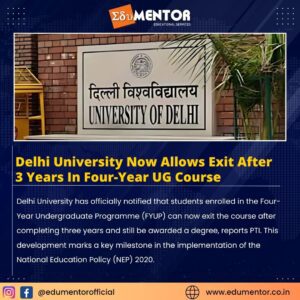The National Testing Agency (NTA) releases the CUET UG syllabus for various subjects tested under the Examination. Any individual willing to access the syllabus can visit the official website and download the CUET UG syllabus in PDF format. For Political Science as a domain subject specifically, the CUET UG syllabus constitutes the entire portion of class 12th board examination along with the deleted part as well.
The paper consists of 50 questions, out of which a candidate can attempt a maximum of 40 questions within 45 minutes. For every correct answer, +5 marks are rewarded and for every incorrect answer a candidate gets -1 marks, there are no marks for a question that is not attempted.
Following is the CUET UG syllabus for the Political Science domain:
| Major Units | Topics | Subtopics |
| Politics in India Since Independence | 1. The era of One-Party Dominance | a. First three general elections b. Nature of Congress dominance at the national level c. Uneven dominance at the state level d. Coalitional nature of Congress e. Major opposition parties |
| 2. Nation-Building and Its Problems | a. Nehru’s approach to nation-building: Legacy of partition: the challenge of ‘refugee’ resettlement b. The Kashmir problem c. Organisation and reorganisation of states d. Political conflicts over language. | |
| 3. Politics of Planned Development | a. Five-year plans b. Expansion of state sector c. And the rise of new economic interests. d. Famine and suspension of five-year plans. e. Green Revolution and its political fallouts. | |
| 4. India’s External Relations | a. Nehru’s foreign policy. b. Sino-Indian war of 1962 c. Indo-Pak war of 1965 and 1971. d. India’s nuclear programme and shifting alliances in world politics. | |
| 5. Challenge to and Restoration of Congress System | a. Political succession after Nehru. b. NonCongressism and electoral upset of 1967 c. Congress split and reconstitution d. Congress’ victory in 1971 elections e. Politics of ‘garibi hatao’. | |
| 6. Crisis of the Constitutional Order | a. Search for ‘committed’ Bureaucracy and Judiciary b. Navnirman movement in Gujarat and the Bihar movement. c. Emergency: context, constitutional and extra-constitutional dimensions d. Resistance to emergency e. 1977 elections and the formation of the Janata Party. f. Rise of civil liberties organisations | |
| 7. Regional Aspirations and Conflicts | a. Rise of regional parties. b. Punjab crisis and the anti Sikh riots of 1984. c. The Kashmir situation. d. Challenges and responses in the North East. | |
| 8. Rise of New Social Movements | a. Farmers’ movements b. Women’s movements c. Environment, and Development-affected people’s movements. d. Implementation of Mandal e. Commission report and its aftermath. | |
| 9. Democratic Upsurge and Coalition Politics | a. Participatory upsurge in the 1990s b. Rise of the JD and the BJP c. The increasing role of regional parties and coalition politics d. UF and NDA governments. e. Elections 2004 and UPA government | |
| 10. Recent Issues and Challenges | a. Challenge of and responses to globalisation: new economic policy and its opposition. b. Rise of OBCs in North Indian politics. c. Dalit politics in the electoral and non-electoral arena d. Challenge of communalism: Ayodhya dispute, Gujarat riots. | |
| Contemporary World Politics | 1. Cold War Era in World Politics | a. Emergence of two power blocs after the Second World War b. Arenas of the Cold War. c. Challenges to Bipolarity: d. Non-Aligned Movement, e. The quest for a new international economic order f. India and the Cold War. |
| 2. Disintegration of the ‘Second World’ and the Collapse of Bipolarity | a. New entities in world politics: Russia, Balkan states, and, Central Asian states b. Introduction of democratic politics and capitalism in post-communist regimes. c. India’s relations with Russia and other post-communist countries. | |
| 3. US Dominance in World Politics | a. Growth of unilateralism: Afghanistan, first Gulf War, response to 9/11 and attack on Iraq. b. Dominance and challenge to the US in economy and ideology. c. India’s renegotiation of its relationship with the USA. | |
| 4. Alternative Centres of Economic and Political Power | a. Rise of China as an economic power in post- Mao Era, b. Creation, and expansion of European Union c. ASEAN. d. India’s changing relations with China. | |
| 5. South Asia in the Post-Cold War Era | a. Democratisation and its reversals in Pakistan and Nepal. b. Ethnic conflict in Sri Lanka. c. Impact of economic globalization on the region. d. Conflicts and efforts for peace in South Asia. e. India’s relations with its neighbours. | |
| 6. International Organisations in a Unipolar World | a. Restructuring and the future of the UN. b. India’s position in the restructured UN. c. Rise of new international actors: new international economic organizations, NGOs. d. How democratic and accountable are the new institutions of global governance? | |
| 7. Security in the Contemporary World | a. Traditional concerns of security and politics of disarmament. b. Non-traditional or human security: global poverty, health, and education. c. Issues of human rights and migration. | |
| 8. Environment and Natural Resources in Global Politics | a. Environment movement and evolution of global environmental norms. b. Conflicts over traditional and common property resources. c. Rights of Indigenous People. d. India’s stand-in global environmental debates. | |
| 9. Globalisation and Its Critics | a. Economic, cultural and political manifestations. b. Debates on the nature of consequences of globalisation. c. Anti-globalization movements. d. India is an arena of globalisation and struggles against it. |
Follow us on Instagram to stay updated on all latest news related to CUET.
Confused about your future? Speak to one of our experienced counsellors and get clarity in your career and CUET UG syllabus. Contact us today.

















